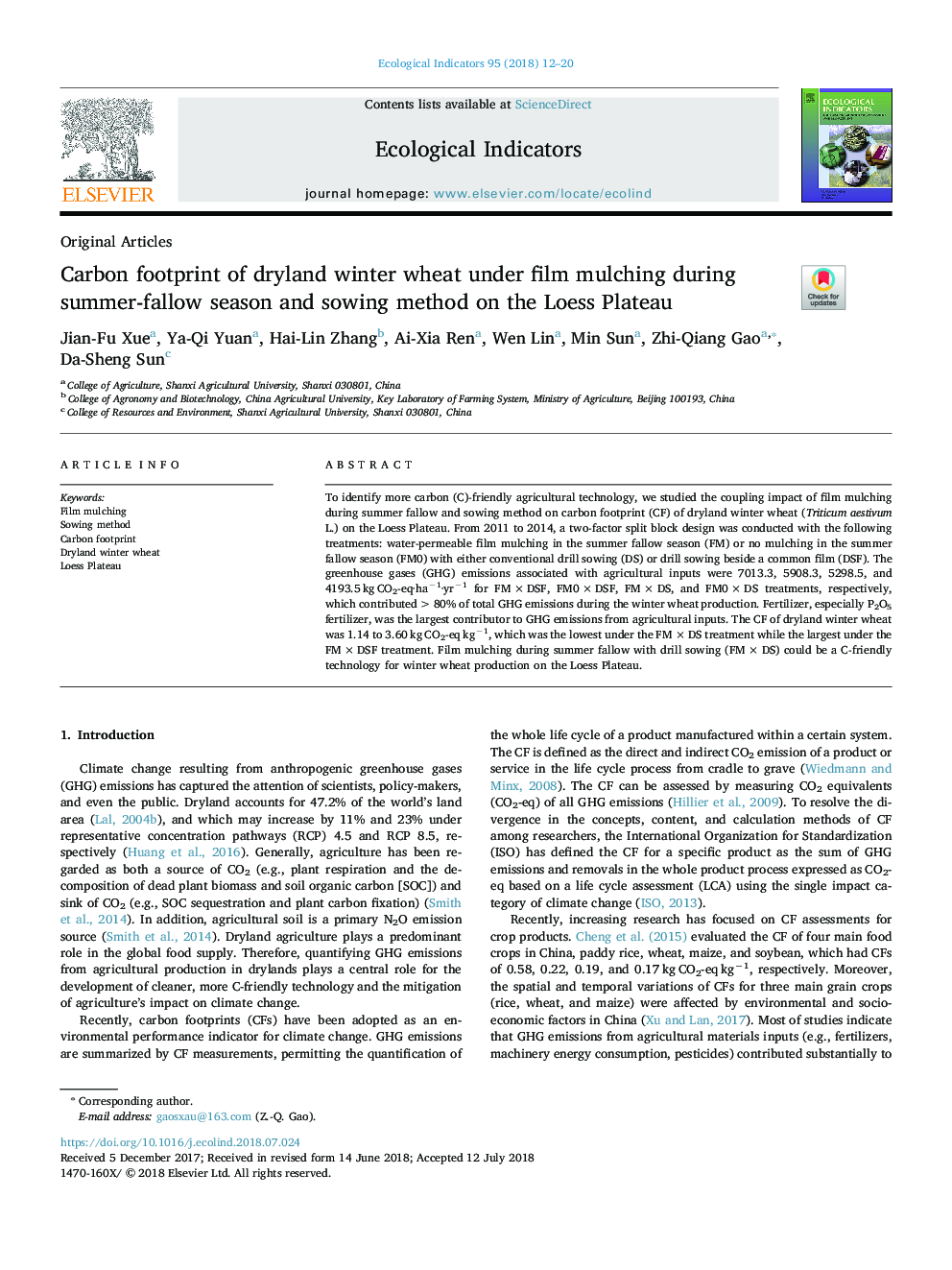| کد مقاله | کد نشریه | سال انتشار | مقاله انگلیسی | نسخه تمام متن |
|---|---|---|---|---|
| 8844910 | 1617107 | 2018 | 9 صفحه PDF | دانلود رایگان |
عنوان انگلیسی مقاله ISI
Carbon footprint of dryland winter wheat under film mulching during summer-fallow season and sowing method on the Loess Plateau
ترجمه فارسی عنوان
راندمان کربن گندم زمستانه خشک در طی فصل مالچ فیلم در فصل تابستان و فرورفتگی و روش کاشت بر روی ورقه لس
دانلود مقاله + سفارش ترجمه
دانلود مقاله ISI انگلیسی
رایگان برای ایرانیان
کلمات کلیدی
فیلم مالچ روش کاشت، رد پای کربن، گندم زمستانه خشک، لس فلوت،
موضوعات مرتبط
علوم زیستی و بیوفناوری
علوم کشاورزی و بیولوژیک
بوم شناسی، تکامل، رفتار و سامانه شناسی
چکیده انگلیسی
To identify more carbon (C)-friendly agricultural technology, we studied the coupling impact of film mulching during summer fallow and sowing method on carbon footprint (CF) of dryland winter wheat (Triticum aestivum L.) on the Loess Plateau. From 2011 to 2014, a two-factor split block design was conducted with the following treatments: water-permeable film mulching in the summer fallow season (FM) or no mulching in the summer fallow season (FM0) with either conventional drill sowing (DS) or drill sowing beside a common film (DSF). The greenhouse gases (GHG) emissions associated with agricultural inputs were 7013.3, 5908.3, 5298.5, and 4193.5â¯kgâ¯CO2-eq·haâ1·yrâ1 for FMâ¯Ãâ¯DSF, FM0â¯Ãâ¯DSF, FMâ¯Ãâ¯DS, and FM0â¯Ãâ¯DS treatments, respectively, which contributed >80% of total GHG emissions during the winter wheat production. Fertilizer, especially P2O5 fertilizer, was the largest contributor to GHG emissions from agricultural inputs. The CF of dryland winter wheat was 1.14 to 3.60â¯kgâ¯CO2-eqâ¯kgâ1, which was the lowest under the FMâ¯Ãâ¯DS treatment while the largest under the FMâ¯Ãâ¯DSF treatment. Film mulching during summer fallow with drill sowing (FMâ¯Ãâ¯DS) could be a C-friendly technology for winter wheat production on the Loess Plateau.
ناشر
Database: Elsevier - ScienceDirect (ساینس دایرکت)
Journal: Ecological Indicators - Volume 95, Part 1, December 2018, Pages 12-20
Journal: Ecological Indicators - Volume 95, Part 1, December 2018, Pages 12-20
نویسندگان
Jian-Fu Xue, Ya-Qi Yuan, Hai-Lin Zhang, Ai-Xia Ren, Wen Lin, Min Sun, Zhi-Qiang Gao, Da-Sheng Sun,
